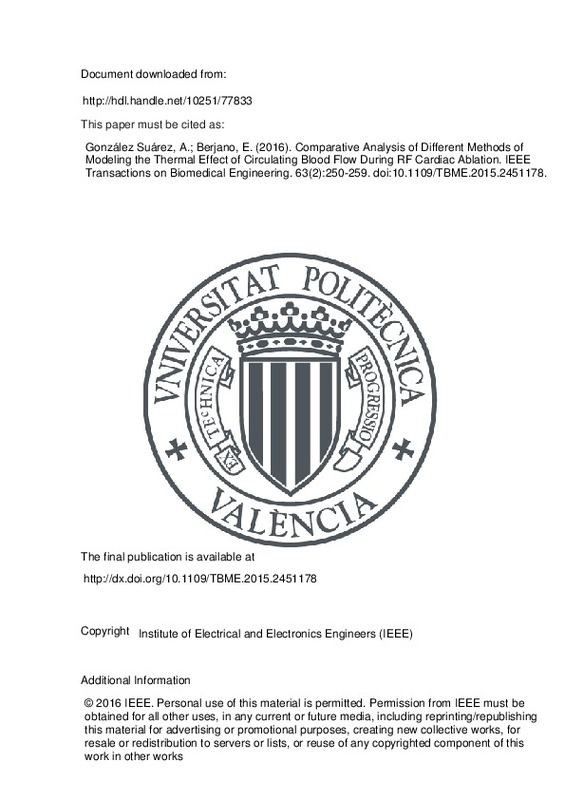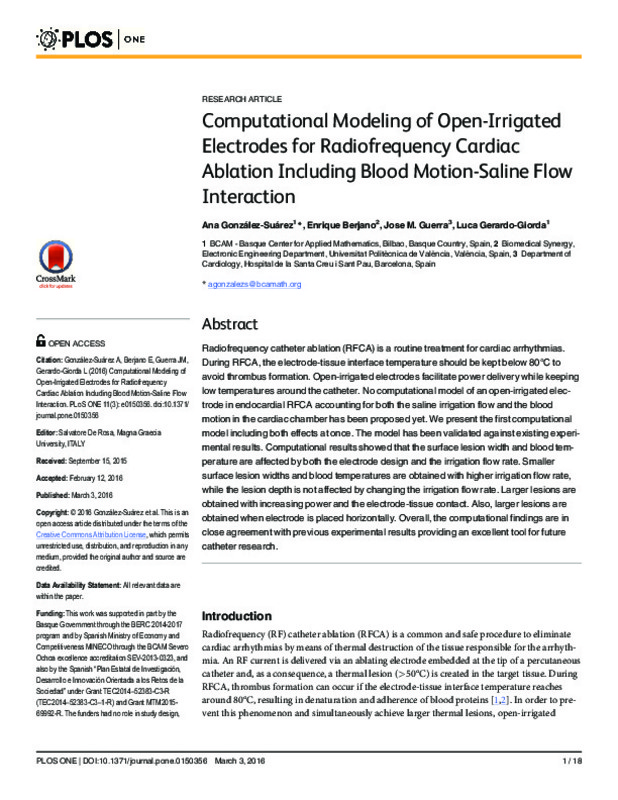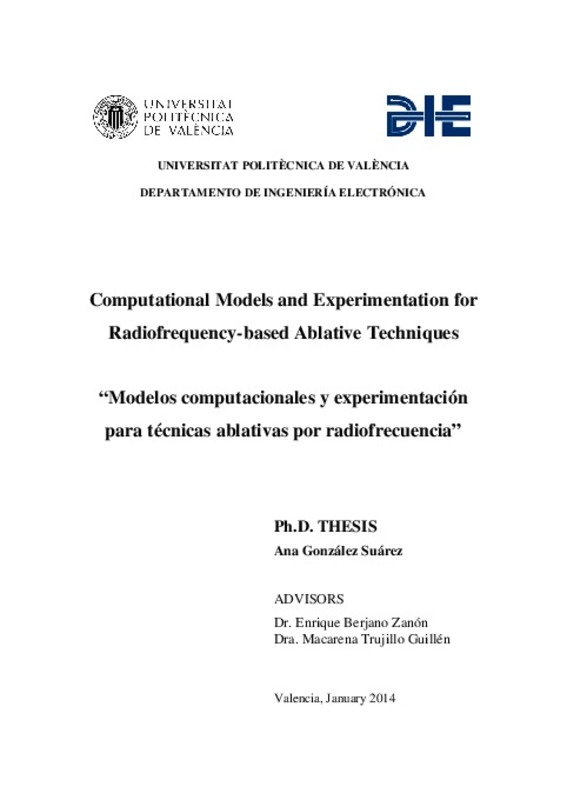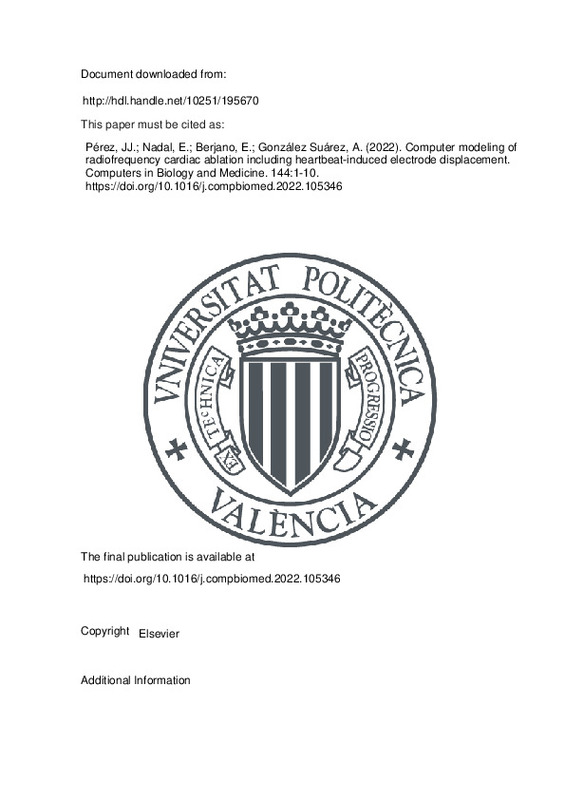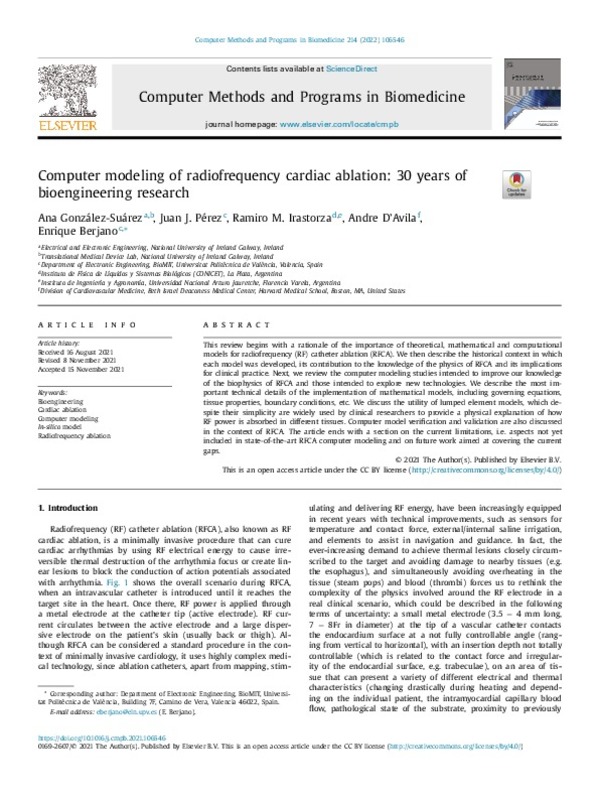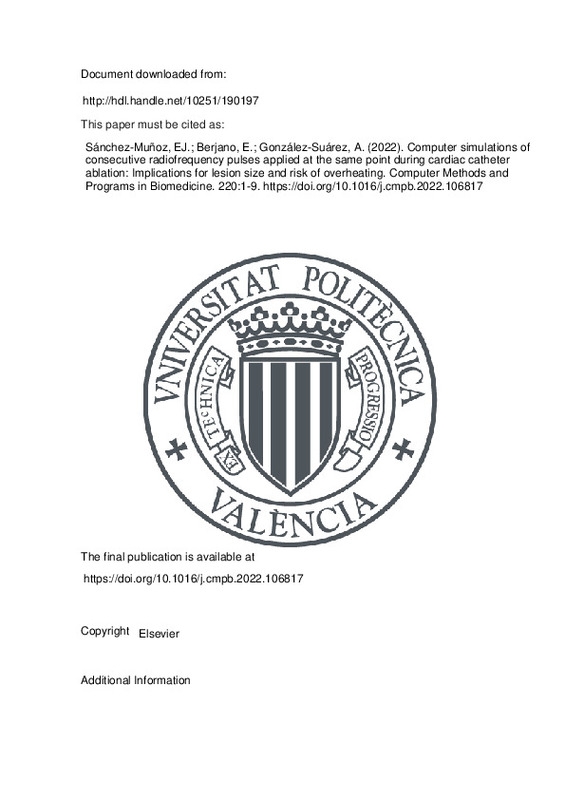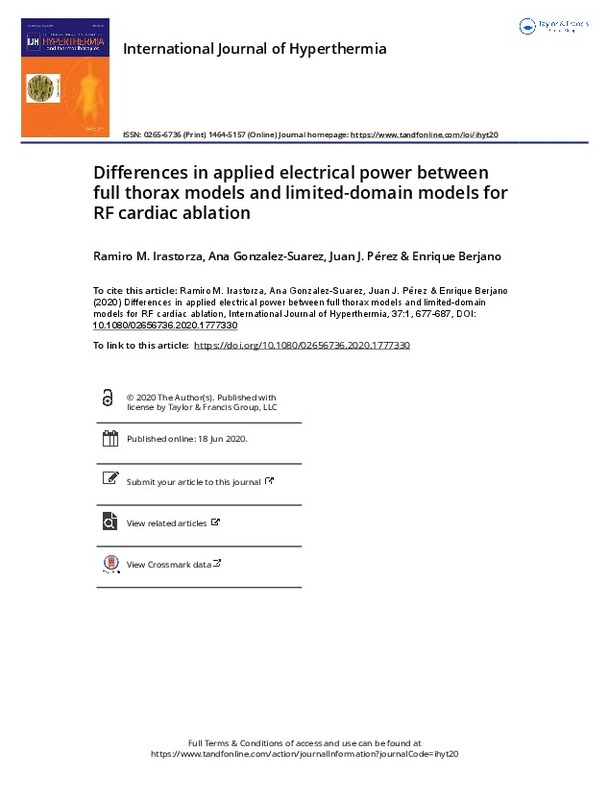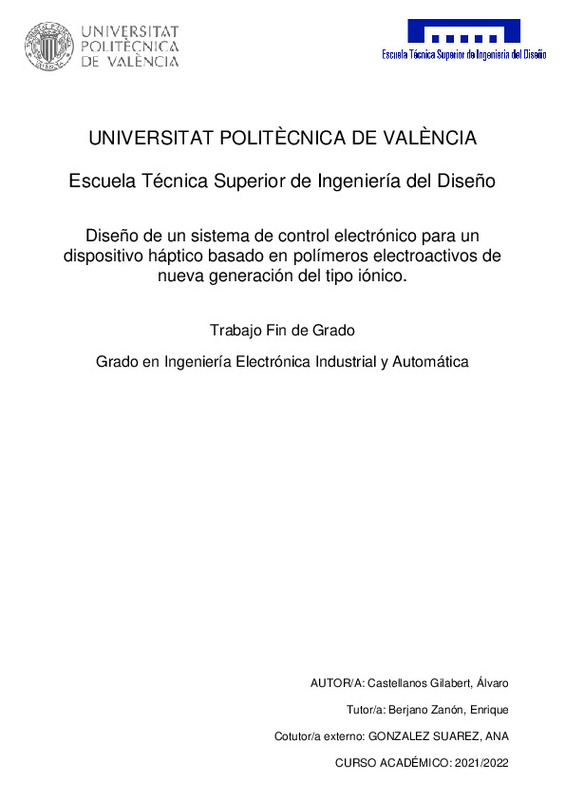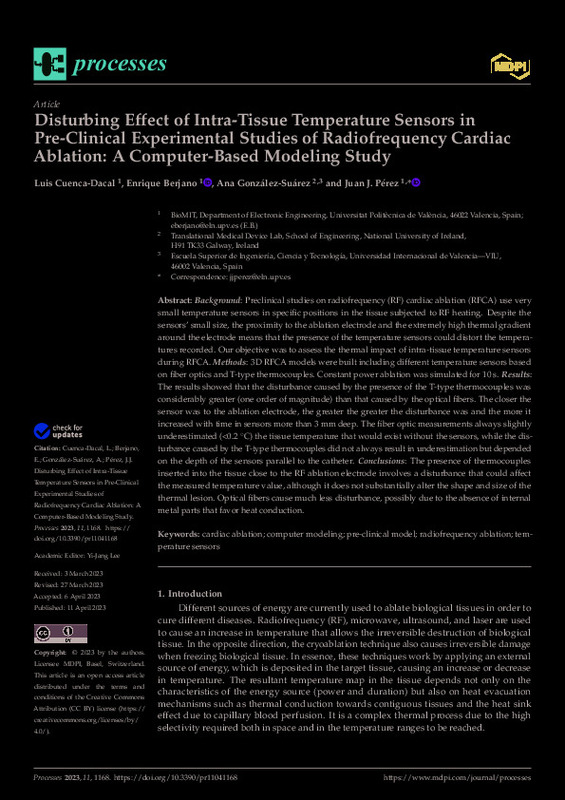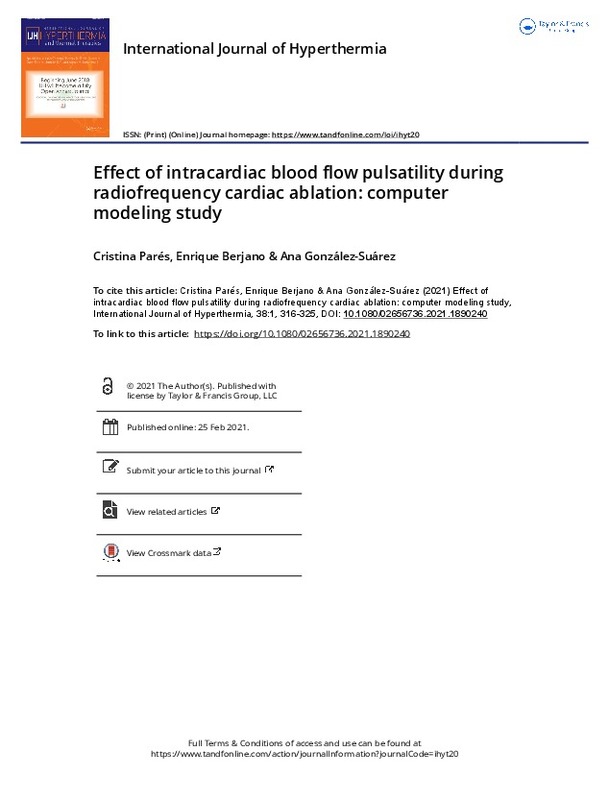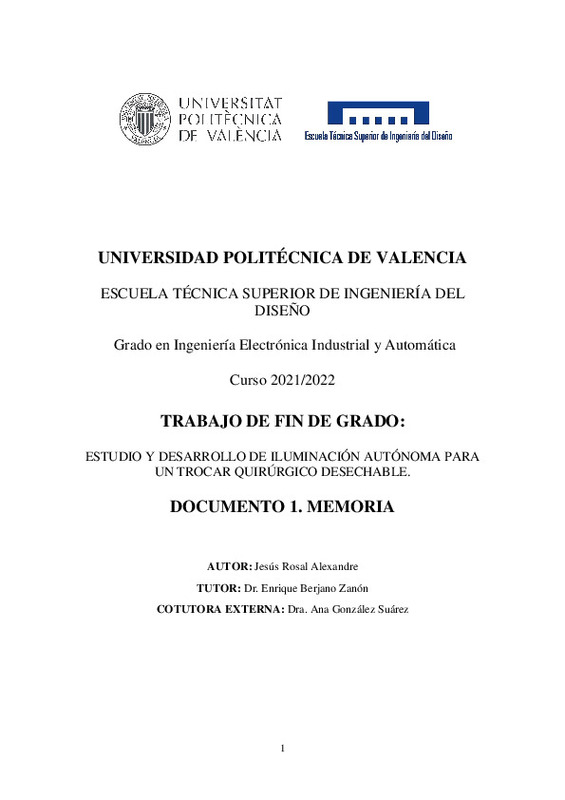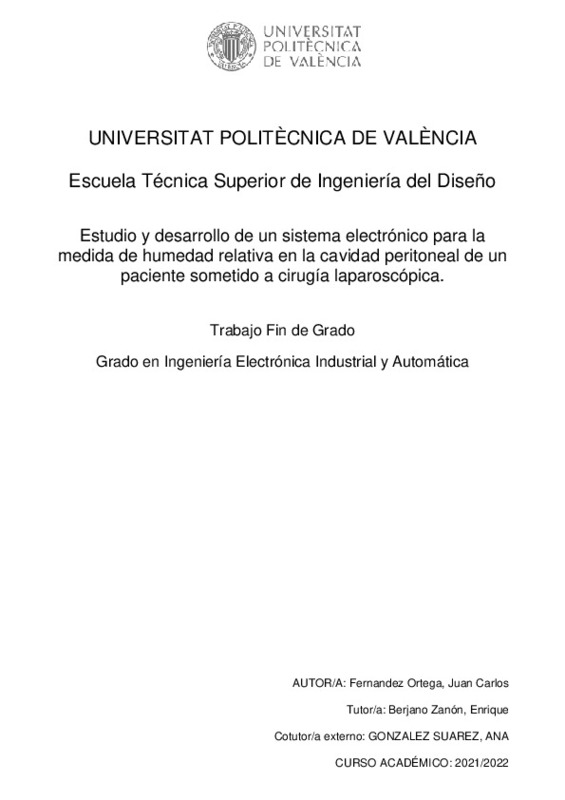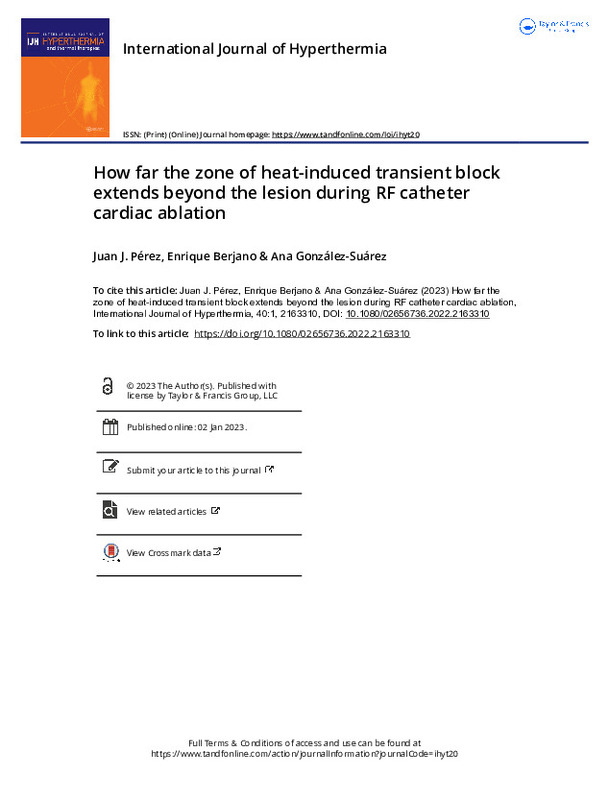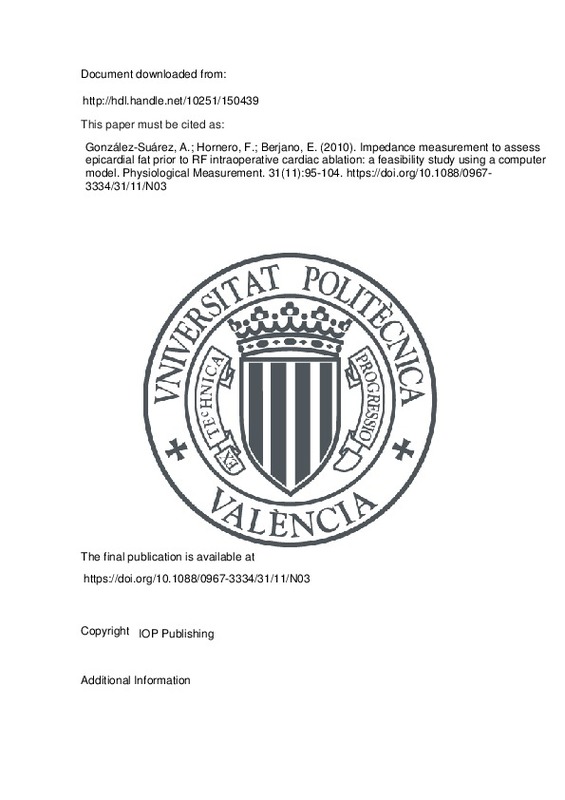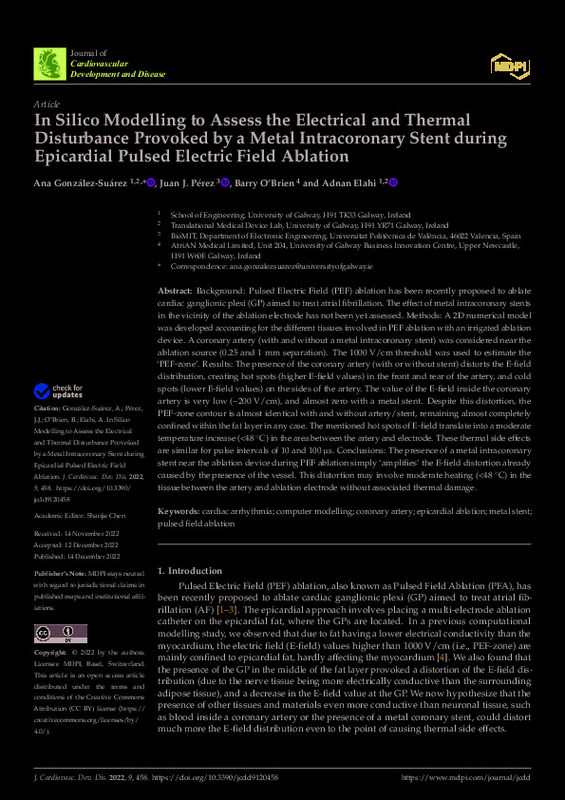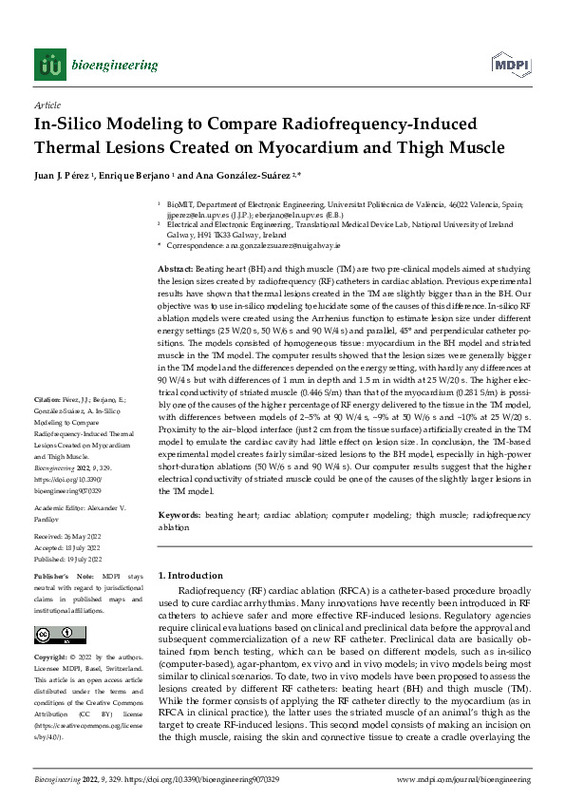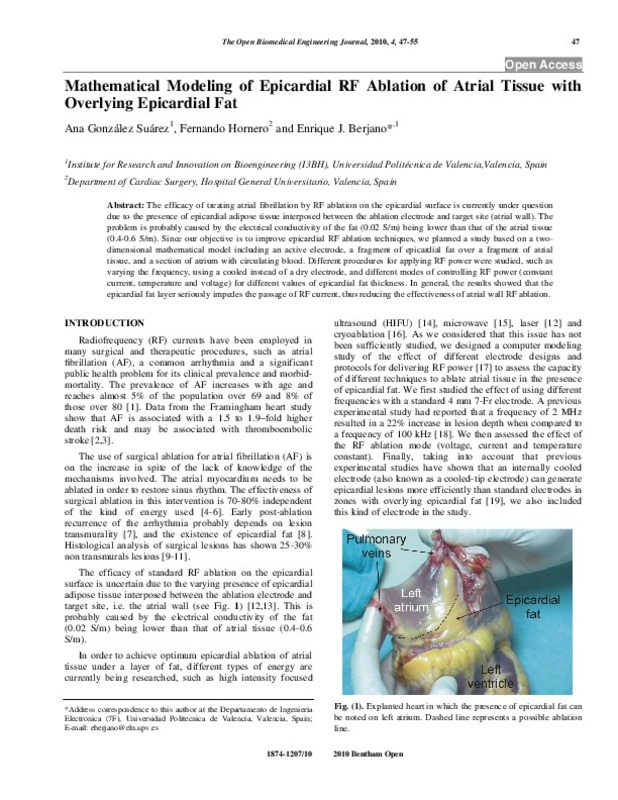

Listar por autor "González Suárez, Ana"
RiuNet: Repositorio Institucional de la Universidad Politécnica de Valencia
- RiuNet repositorio UPV
- :
- Listar por autor
JavaScript is disabled for your browser. Some features of this site may not work without it.
Buscar en RiuNet
Listar
Mi cuenta
Ayuda RiuNet
Admin. UPV
Listar por autor "González Suárez, Ana"
Mostrando ítems 1-20 de 26
-
González Suárez, Ana; Berjano, Enrique (Institute of Electrical and Electronics Engineers (IEEE), 2016-02)Our aim was to compare the different methods of modeling the effect of circulating blood flow on the thermal lesion dimensions created by radio frequency (RF) cardiac ablation and on the maximum blood temperature. ...
-
González-Suárez, Ana; Berjano, Enrique; Guerra, Jose M.; Gerardo-Giorda, Luca (Public Library of Science, 2016-03-03)[EN] Radiofrequency catheter ablation (RFCA) is a routine treatment for cardiac arrhythmias. During RFCA, the electrode-tissue interface temperature should be kept below 80°C to avoid thrombus formation. Open-irrigated ...
-
González Suárez, Ana (Universitat Politècnica de València, 2014-03-14)Las técnicas ablativas basadas en energía por radiofrecuencia (RF) se emplean con el fin de lograr un calentamiento seguro y localizado en el tejido biológico. En los últimos años ha habido un rápido crecimiento en el ...
-
Pérez, Juan J; Nadal, Enrique; Berjano, Enrique; González Suárez, Ana (Elsevier, 2022-05)[EN] Background: The state of the art in computer modeling of radiofrequency catheter ablation (RFCA) only considers a static situation, i.e. it ignores ablation electrode displacements induced by tissue movement due to ...
-
González-Suárez, Ana; Pérez, Juan J; Irastorza, Ramiro M.; D Avila, Andre; Berjano, Enrique (Elsevier, 2022-02)[EN] This review begins with a rationale of the importance of theoretical, mathematical and computational models for radiofrequency (RF) catheter ablation (RFCA). We then describe the historical context in which each model ...
-
Sánchez-Muñoz, Eugenio J.; Berjano, Enrique; González-Suárez, Ana (Elsevier, 2022-06)[EN] Background and objectives: To study temperature distribution and lesion size during two repeated radiofrequency (RF) pulses applied at the same point in the context of RF cardiac ablation (RFCA). Methods: An in-silico ...
-
Irastorza, Ramiro M.; Gonzalez-Suarez, Ana; Pérez, Juan J; Berjano, Enrique (Taylor & Francis, 2020-01-01)[EN] Purpose:Most modeling studies on radiofrequency cardiac ablation (RFCA) are based on limited-domain models, which means the computational domain is restricted to a few centimeters of myocardium and blood around the ...
-
Castellanos Gilabert, Álvaro (Universitat Politècnica de València, 2022-09-23)[ES] El objeto del TFG es el diseño de un sistema electrónico capaz de excitar un polímero electroactivo en el contexto de un dispositivo háptico (por ejemplo un guante electrónico que trasmite sensaciones táctiles al ...
-
Cuenca-Dacal, Luis; Berjano, Enrique; González-Suárez, Ana; Pérez, Juan J (MDPI AG, 2023-04-11)[EN] Background: Preclinical studies on radiofrequency (RF) cardiac ablation (RFCA) use very small temperature sensors in specific positions in the tissue subjected to RF heating. Despite the sensors' small size, the ...
-
Parés, Cristina; Berjano, Enrique; González-Suárez, Ana (Taylor & Francis, 2021-01-01)[EN] Purpose To assess the effect of intracardiac blood flow pulsatility on tissue and blood distributions during radiofrequency (RF) cardiac ablation (RFCA). Methods A three-dimensional computer model was used to ...
-
Rosal Aleixandre, Jesús (Universitat Politècnica de València, 2022-06-09)[ES] Los trocares quirúrgicos son dispositivos médicos destinados a dar un acceso mínimamente invasivo a la cavidad peritoneal durante la cirugía laparoscópica. Hasta la fecha ninguno de ellos posee capacidad de iluminar ...
-
Fernández Ortega, Juan Carlos (Universitat Politècnica de València, 2022-07-14)[ES] Durante la cirugía laparoscópica se insufla aire en el interior de la cavidad peritoneal del paciente. Este aire es a menudo seco y frío, lo que puede producir daños en los tejidos biológicos. Es por lo tanto ...
-
Coderch-Navarro, Sergi; Berjano, Enrique; Cámara, Óscar; González-Suárez, Ana (Taylor & Francis, 2021-01-01)[EN] Purpose While the standard setting during radiofrequency catheter ablation (RFCA) consists of applying low power for long times, a new setting based on high power and short duration (HPSD) has recently been suggested ...
-
Pérez, Juan J; Berjano, Enrique; González Suárez, Ana (Taylor & Francis, 2023-01-02)[EN] Purpose While radiofrequency catheter ablation (RFCA) creates a lesion consisting of the tissue points subjected to lethal heating, the sublethal heating (SH) undergone by the surrounding tissue can cause transient ...
-
Pérez, Juan J.; González-Suárez, Ana (Public Library of Science, 2023-11-02)[EN] Even though the preliminary experimental data suggests that cardiac Pulsed Field Ablation (PFA) could be superior to radiofrequency ablation (RFA) in terms of being able to ablate the viable myocardium separated from ...
-
González-Suárez, Ana; Hornero, Fernando; Berjano, Enrique (IOP Publishing, 2010-11)[EN] Radiofrequency (RF) cardiac ablation is used to treat certain types of arrhythmias. In the epicardial approach, efficacy of RF ablation is uncertain due to the presence of epicardial adipose tissue interposed between ...
-
González-Suárez, Ana; Pérez, Juan J; O Brien, Barry; Elahi, Adnan (MDPI AG, 2022-12)[EN] Background: Pulsed Electric Field (PEF) ablation has been recently proposed to ablate cardiac ganglionic plexi (GP) aimed to treat atrial fibrillation. The effect of metal intracoronary stents in the vicinity of the ...
-
Pérez, Juan J; Berjano, Enrique; González-Suárez, Ana (MDPI AG, 2022-07-16)[EN] Beating heart (BH) and thigh muscle (TM) are two pre-clinical models aimed at studying the lesion sizes created by radiofrequency (RF) catheters in cardiac ablation. Previous experimental results have shown that thermal ...
-
González Suárez, Ana; Hornero, Fernando; Berjano, Enrique (Bentham Science, 2010-02)[EN] The efficacy of treating atrial fibrillation by RF ablation on the epicardial surface is currently under question due to the presence of epicardial adipose tissue interposed between the ablation electrode and target ...
-
Pérez, Juan J; González Suárez, Ana; Berjano, Enrique (Taylor & Francis, 2018)[EN] Purpose: The thermal effect of the intramyocardial blood perfusion on the size of lesions created by radiofrequency cardiac ablation (RFCA) has not been adequately studied to date. Our objective was to assess the ...
Mostrando ítems 1-20 de 26

Universitat Politècnica de València. Unidad de Documentación Científica de la Biblioteca (+34) 96 387 70 85 · RiuNet@bib.upv.es


